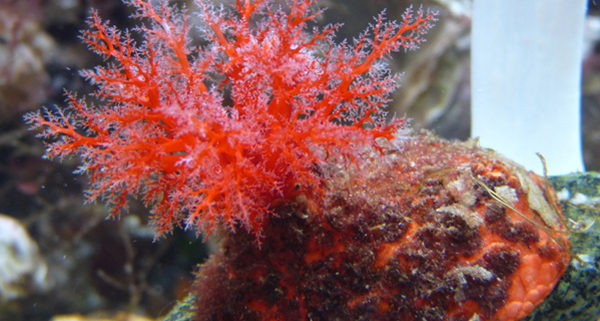Armored Sea Cucumber
By Isaac K. and Jenna T.
Common name: Armored Sea Cucumber
Scientific name: Psolus chitonoides
Size range: They are up to 7 cm (2.8 inches) in length.
Identifying Features: The Armored Sea Cucumber is covered in calcareous plates. The mouth is located on the top front end and is surrounded by bright red oral tentacles. You would not think it’s a sea cucumber because it attaches to rocks while most other sea cucumber move around.
Habitat: The Armored Sea Cucumber occurs from the Gulf of Alaska to Baja California and they live up to 247m under water. The type of areas they prefer to live in are exposed inlets and on clean steep rocks that are free of any kind of debris.
Food: The Armored Sea Cucumber extends its tentacles into the current and catches passing food (usually plankton or krill).
Predators: The main predator for the Armored Sea Cucumber is the sea star. Other predators are parasitic flat worms and also some kinds of snails that can live inside of them. The snails are organisms that crawl all over the sea cucumber and blend into its colour.
Life cycle: Mating occurs during the months of June to August. The mate releases its gametes into the water by waving its tentacles across the genital pore. The eggs develop for 70 days. They then become a little juvenile sea cucumber that are cautious and live under rocks and in algae. It will take them 5 years to become an adult and then they roughly have 3 more years of life.
References
Adams, Mary J. Psolus chitonoides (Armored sea cucumber). Retrieved January 16 2006 from animals/Psolus.htmhttp://www.beachwatchers.wsu.edu/ezidweb/
Kozloff, E. (1993) Seashore life of the northern Pacific coast: An illustrated guide to Northern California, Oregon, Washington, and British Columbia. Seattle, Washington: University of Washington Press.
Lambert P. (1997) The Race Rocks Taxonomy. Retrieved January 2010 fromhttp://www.racerocks.com/racerock/eco/taxalab/ensy02/psolusc/nadegec.htm
Williams, Kelly (2002). Psolus chitonoides; Armored Sea Cucumber. Retrieved January 2010 fromhttp://www.wallawalla.edu/academics/departments/biology/rosario/inverts/Echinodermata/Class%20Holothuroidea/Psolus_chitonoides.html
Photo by: D. Young





Leave a Reply
Want to join the discussion?Feel free to contribute!